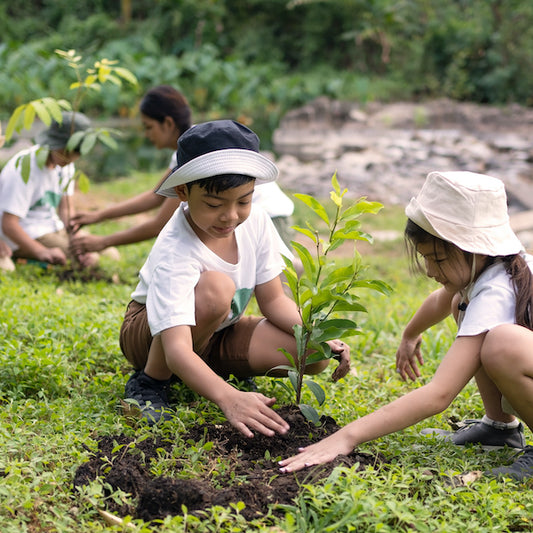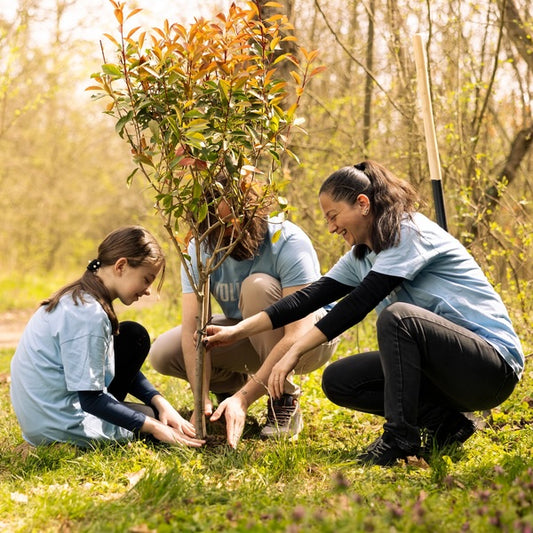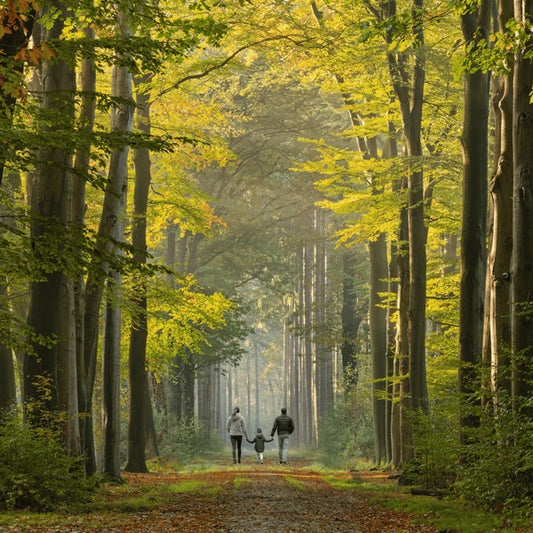Tree Saplings of Native Trees
Tree Saplings of Native Trees
🌳 2-3ft Tree + 3 Years Nurturing + Geo-Tagged
Couldn't load pickup availability
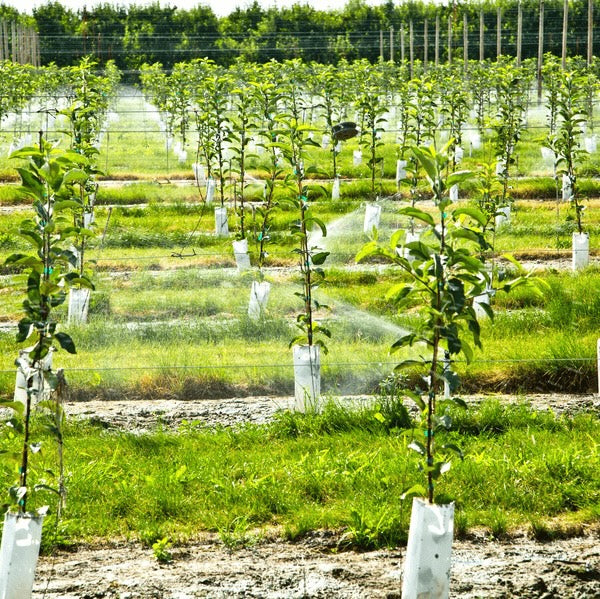
Native Tree Saplings - Plant Local Trees for Biodiversity
This pack includes 100 tree saplings of native trees of your region. All sapling will come in polybag with height between 2ft to 5ft. Planting native Read more
Native Tree Saplings - Plant Local Trees for Biodiversity
This pack includes 100 tree saplings of native trees of your region.
All sapling will come in polybag with height between 2ft to 5ft.
Planting native trees provide benefits such as promoting biodiversity, reducing soil erosion, regulating the local climate, providing a sustainable resource, improving air quality, and adding aesthetic value to the environment.
They play a crucial role in maintaining the balance of the ecosystem and supporting the well-being of local communities.
Planting native trees have several benefits for the environment and the local community. Some of the reasons why it's good to plant native trees include:
-
Biodiversity: Native trees provide habitat and food for a variety of native animals, birds, and insects, promoting biodiversity and maintaining the balance of the ecosystem.
-
Soil conservation: Native trees have deep roots that help to hold soil in place, reducing soil erosion and promoting soil health.
-
Climate stability: Native trees play an important role in regulating the local climate, providing shade and cooling in summer, and shelter and warmth in winter.
-
Sustainable resource: Native trees can provide a sustainable source of food, fuel, and materials for local communities, reducing the need for imported resources.
-
Improved air quality: Native trees act as natural air filters, removing pollutants from the air and producing oxygen.
-
Aesthetic value: Native trees add beauty and character to the landscape, and can create a sense of place and identity for local communities.
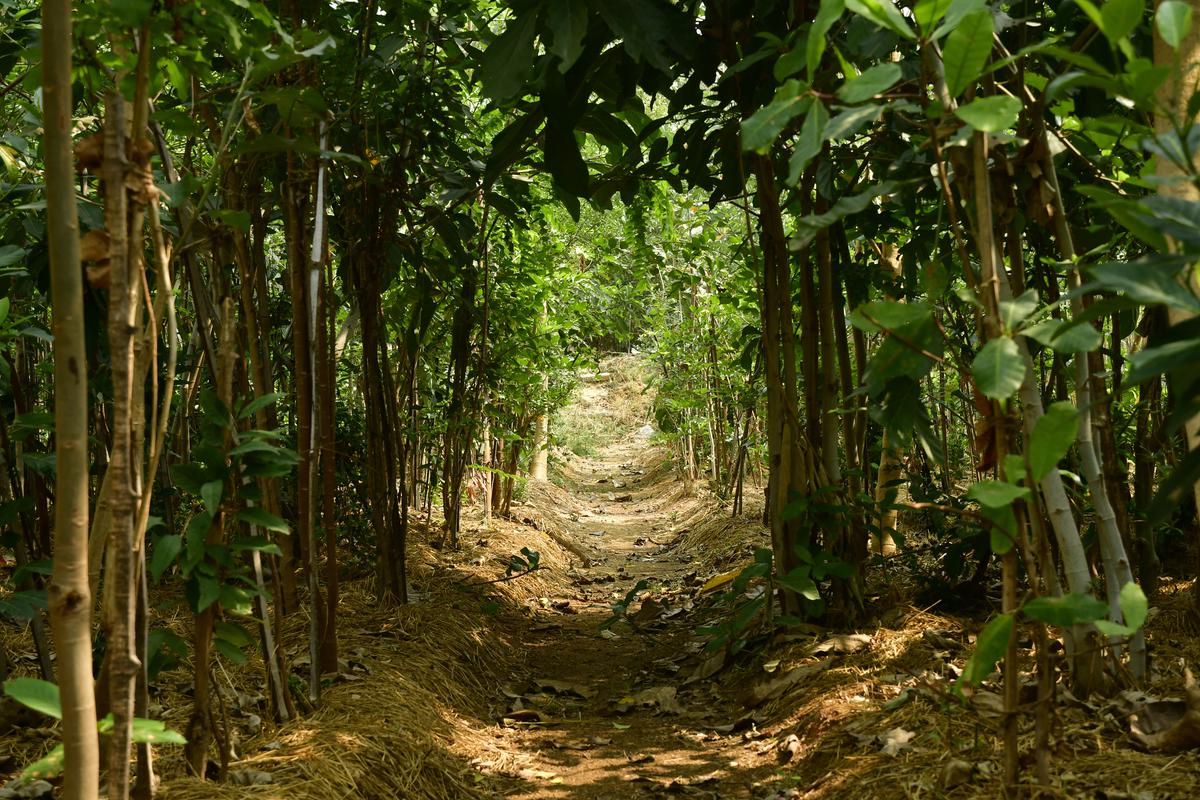
Create Your Forest
How to create a Forest?
One tree at a time.
- You can create your own forest by planting trees with your family and friends on every important event or milestone in your life.
- You can plant a tree on your birthday, anniversary, promotion
- You can plant a tree on festivals like Diwali, Christmas, Eid and New Year to wish your friends and family
Impact of your Tree
-
Releases Oxygen
A mature tree produces around 120 kilograms of oxygen per year, which is sufficient for one human per year.
-
Reduces Air Pollution
A tree absorbs harmful gases like CO2, NO2 released by factories and vehicles, which can have serious health problems for us
-
Removes CO2
A Tree removes 22 KGs of CO2 from atmosphere per year, which is equivalent to the CO2 realeased by a human in 10 days.
-
Cooling Effect
A Tree generates cooling effect of around 10 room size ACs by providing shade and through a process of transpiration.
FAQ
What are bulk tree saplings?
Bulk tree saplings refer to a large number of young trees grown in nurseries specifically for tree plantation activities.
Where can i buy bult tree saplings at low cost?
You can buy them on growbillion trees
Where can I buy bulk tree saplings?
Bulk tree saplings can be purchased from nurseries, forestry departments, or online suppliers that specialize in the production of tree saplings for planting activities.
What are the factors that determine the quality of tree saplings?
The quality of tree saplings is determined by factors such as the species, age, health, size, and growing conditions of the saplings.
How can I ensure that the tree saplings I purchase are healthy?
Look for signs of good health, such as strong stems, healthy leaves, and a well-developed root system. The saplings should also be free from any signs of disease or pests.
What are some common diseases that affect tree saplings?
Common diseases that affect tree saplings include root rot, leaf spot, and powdery mildew. It is important to purchase saplings from a reputable source that follows best practices in nursery management to minimize the risk of disease.
How can I ensure that the saplings I purchase are the right size for my project?
The size of the saplings you purchase depends on the project's goals and the planting site's conditions. A professional nursery or forestry department can help you select the appropriate size saplings for your project.
What kind of growing conditions are necessary for producing high-quality saplings?
High-quality saplings require the right soil type, sunlight exposure, and water supply. They also need appropriate fertilization and pest control measures to ensure their health and growth.
How can I ensure that the saplings I purchase are of the right species for my project?
It is important to select the appropriate species of saplings based on the project's goals and the planting site's conditions. A professional nursery or forestry department can help you select the appropriate species.
Can saplings from different sources vary in quality?
Yes, saplings from different sources can vary in quality. It is important to purchase saplings from a reputable source that follows best practices in nursery management to ensure their health and growth.
What are the benefits of purchasing high-quality saplings?
High-quality saplings have a better chance of survival and growth, leading to a healthier and more resilient forest or landscape. They also require less care and maintenance after planting, reducing the cost and effort of the project.
How many tree saplings should I buy for my plantation project?
The number of tree saplings needed depends on the size and location of the plantation site, as well as the desired outcome of the project. A professional nursery or forestry department can help you determine the appropriate number of saplings needed for your project.
How do I select the right species of tree saplings?
The species of tree saplings selected should be suitable for the plantation site's location, soil type, and climate. A professional nursery or forestry department can help you select the appropriate species.
How can I ensure that the tree saplings I purchase are of good quality?
Good quality tree saplings should have healthy leaves, strong stems, and a well-developed root system. They should also be disease-free and grown in suitable conditions. Ensure that the supplier you purchase from has a good reputation and provides high-quality saplings.
How should I transport and store the tree saplings?
Tree saplings should be transported and stored carefully to prevent damage. They should be kept in a cool, dry place and protected from extreme temperatures, sunlight, and wind.
When is the best time to plant tree saplings?
The best time to plant tree saplings depends on the species and the local climate. In general, spring and fall are the best times to plant tree saplings.
How should I prepare the plantation site before planting tree saplings?
The plantation site should be properly prepared before planting tree saplings. This includes clearing any debris, tilling the soil, and adding any necessary amendments such as fertilizers.
How do I plant tree saplings correctly?
Tree saplings should be planted at the appropriate depth and distance from each other. The roots should be spread out in the planting hole, and the soil should be firmly packed around the sapling.
How often should I water the tree saplings after planting?
Tree saplings should be watered regularly after planting, especially during the first few weeks. The frequency of watering depends on the local climate and soil conditions.
How do I protect the tree saplings from pests and wildlife?
Tree saplings can be protected from pests and wildlife by using physical barriers such as fencing, netting, or tree shelters. Chemical control methods can also be used, but they should be used sparingly and only when necessary.
How long does it take for tree saplings to grow into mature trees?
The time it takes for tree saplings to grow into mature trees depends on the species and local growing conditions. It can take anywhere from several years to several decades for a tree to reach maturity.
How do I ensure that the tree saplings survive and grow after planting?
Tree saplings need adequate care and maintenance after planting to ensure their survival and growth. This includes proper watering, mulching, pruning, and protecting them from pests and wildlife.
How can tree plantation activities benefit the environment and local communities?
Tree plantation activities can benefit the environment by mitigating climate change, promoting biodiversity, improving soil quality, and reducing erosion. They can also provide economic benefits such as timber and non-timber forest products, and enhance the beauty and recreational value of the landscape.
What are some best practices for implementing tree plantation activities?
Some best practices for implementing tree plantation activities include engaging with local stakeholders, selecting suitable species of trees, establishing long-term maintenance plans, and monitoring the impact of the project on the environment and local communities.
Can tree plantation activities contribute to the local economy?
Yes, tree plantation activities can contribute to the local economy by creating jobs, generating income for local communities, and supporting local industries such as timber and forestry.
How much does it cost to plant a tree for corporates?
The cost of planting a tree start at Rs 99. It can vary depending on the tree species, size, and where it is located.
Can I personalize the tree?
Yes, you can personalize the gift of a tree via a certificate and a personalized greeting card with the gift.
Can I choose where the tree is planted?
No, tree plantation happens in bulk in forest with capacity of 10,000 or more plants. location is chosen based availability.


